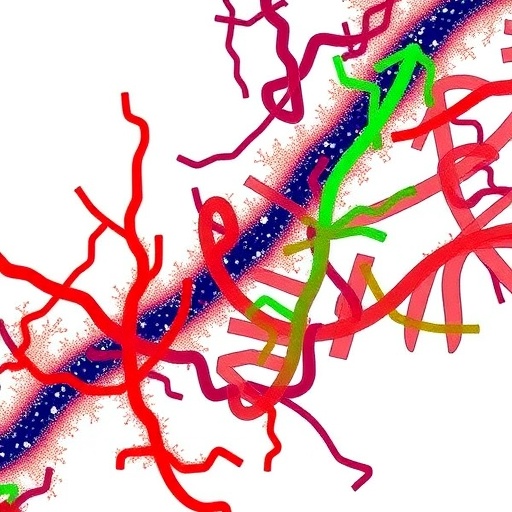
Credit: L. Brian Stauffer
To break out of Earth's lower orbit, hypersonic vehicles must reach speeds greater than Mach 5. At these hypersonic speeds, the air particles and gases that flow around the vehicle and interact with the surfaces generate heat and create shock waves that disturb the flow's equilibrium. New research at the University of Illinois at Urbana-Champaign created a model to simulate and better understand flow transitions.
"At hypersonic speeds, the flow is moving at high Mach numbers, but there are also wings or flaps on the vehicle. At each of those junctures, you can have very strong recirculation, which leads to unsteadiness. It's difficult to predict how bad the unsteadiness can become before the flow is no longer smooth, and becomes turbulent," said Deborah Levin, professor in the Department of Aerospace Engineering in the College of Engineering at the U of I.
She and her doctoral student Ozgur Tumuklu, along with Professor Vassilis Theofilis from the University of Liverpool, conducted research that brings a revolutionary understanding to the field of hypersonic flow.
Levin said she studies flow at a very fundamental level to understand the flow, the forces that the flow can create, and the length of time the flow remains stable in terms of microseconds to milliseconds–faster than the blink of an eye.
"From the very fundamental aspects of the flow, when the speed is so high, the gases around the surfaces become very hot," Levin explained. "The frictional heat starts to cause chemical reactions. The gas no longer remains 79 percent nitrogen and 21 percent oxygen like we have in our atmosphere.
"When all of these effects occur, they're called non-equilibrium effects. It's a phenomenon that occurs as the air gets thinner as you move faster," Levin said. "Coupling all of that–the non-equilibrium and the stability–that's what's really novel about this research and hasn't been done before. The outcome of this research is a model and the ability to now use this technique in the future to design shapes and induce chemical reactions that will or will not induce stability or quench it."
Levin said some of the original work in this field began with experiments at the U of I with Professor Joanna Austin, before leaving for a position at California Technical. A major part of her work at Illinois was designing a new facility that could measure some of the features of flow.
"She has a hypervelocity expansion tube–a class of measurement techniques that can be used to induce a flow over a double-wedge model about the size of my hand," Levin said. "Dr. Austin creates a hypersonic flow over the entire model. It used a tremendous about of energy to accomplish but it can be used for low density (thinner air) cases. But the double wedge can be a difficult shape to understand what's going on. We ran numerous simulations but could not get the flow to reach a stable or steady result."
Levin said collaborating with Theofilis helped moved the work forward, particularly with respect to a new approach and toward the shape of the model.
"He said to me, 'I know this condition [sic double wedge] is difficult to understand from a stability point of view, but if you start to print out from your flow calculations the temperature here, here, and here, you'll see that the temperature will never stabilize. You'll see swirls and vortices that come and go.' When an expert tells you that, you pay attention," Levin said.
One thing that they did do before leaving the double wedge was to "artificially reduce the conditions in the hypervelocity expansion tube by by a factor of about an eighth," Levin said. "We still saw a lot of the features like the shocks, and recirculation, but the flow calmed down and we were able to simulate a steady state."
The researchers put the double wedge aside for the moment and moved to a double cone design as a model. Levin said, "It has axial symmetry–like a top, it has symmetry around all angles–making it a lot easier to compute."
The research provided new understanding about the points of transition in flow from smooth to turbulent, which can ultimately inform safer vehicle design.
###
The study, "On the unsteadiness of shock – laminar boundary layer interactions hypersonic flows over a double cone," was conducted by Deborah Levin and Ozgur Tumuklu. It appears in the journal, Physics of Fluids.
The project was supported by the Air Force Office of Scientific Research.
Media Contact
Debroah Levin
[email protected]
217-300-0872
@EngineeringAtIL
http://engineering.illinois.edu/
Original Source
https://aerospace.illinois.edu/news/simulating-hypersonic-flow-transitions-smooth-turbulent http://dx.doi.org/10.1063/1.5047791





